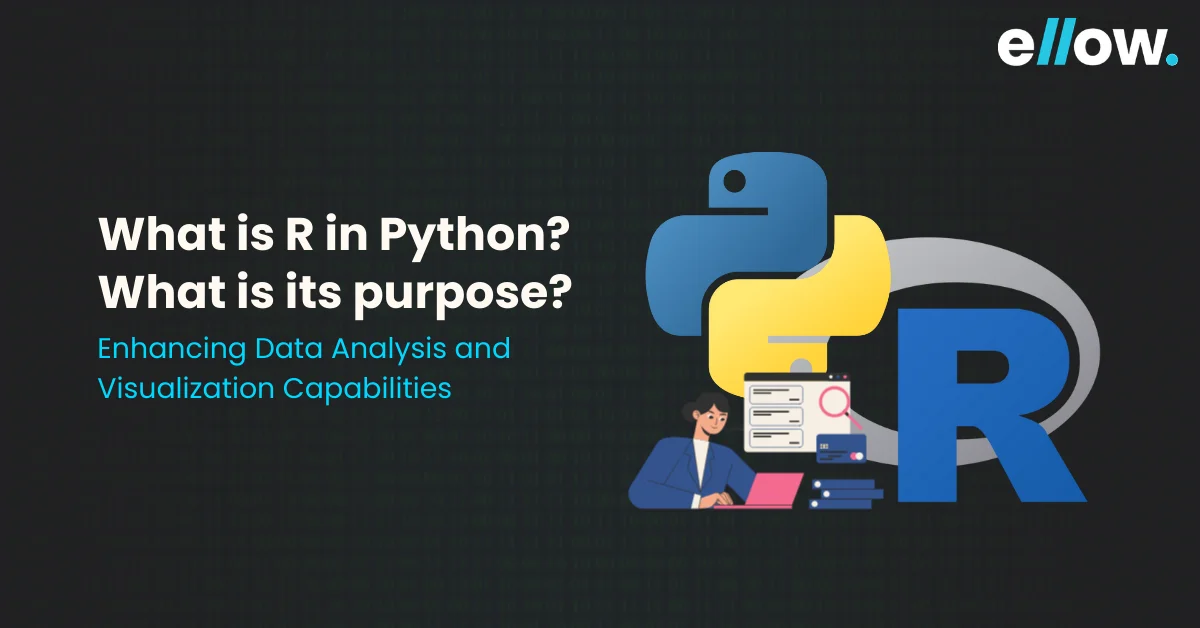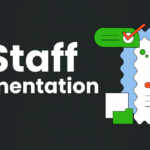Let’s build the future together.
Great ideas need great people. Partner with us to bring your vision to life, or take the first step in your career by joining our team of innovators.

Python stands out as one of the most beloved programming languages, celebrated for its simplicity and incredible versatility. Whether you’re diving into web development, software engineering, task automation, or data analysis, Python offers a powerful and accessible toolkit.
In the cutting-edge fields of AI and machine learning, Python’s popularity is unrivaled. Its ease of use, combined with an extensive array of libraries, makes it the go-to choice for developers.
With a global community of around 15.7 million developers, according to Statista, Python is backed by a wealth of resources, frameworks, and support that continually drive its evolution and adoption.
But here’s the kicker: while Python is undeniably powerful, it’s not always the best fit for every data analysis task. Enter R—a language crafted specifically for statistical computing and graphics.
R’s unparalleled strength in specialized statistical analysis and visualization makes it an indispensable ally for data analysts.
Imagine harnessing the combined power of Python and R to tackle any data analysis challenge that comes your way. Together, these two languages offer a robust and complementary toolkit, empowering you to achieve insights and results with unmatched precision and efficiency.
Dive deeper into this blog to discover how leveraging Python and R can elevate your data analysis projects to new heights.
In Python, ‘R’ signifies integrating the R programming language within the Python ecosystem. This allows Python users to utilize R’s statistical and graphical capabilities without leaving the Python environment. Several tools and libraries facilitate this integration, enabling seamless communication between the two languages.
This robust interface allows R to be embedded within Python. It enables Python code to run R scripts, access R objects, and use R’s functions directly from Python. Here’s an example of how to use `rpy2`:
import rpy2.robjects as robjects
r = robjects.r
r(‘x <- rnorm(100)’)
x = r[‘x’]
print(x)
Although primarily used in the R ecosystem, `reticulate` provides a bridge to call Python from R and vice versa. This can be particularly useful for users who work interchangeably between R and Python, leveraging the strengths of both languages.
library(reticulate)
py_run_string(“import numpy as np”)
py_run_string(“x = np.random.normal(size=100)”)
This is another package that provides an interface to run Python code within R, which can be useful for R users needing to use Python libraries.
library(rPython)
python.exec(“import numpy as np”)
python.exec(“x = np.random.normal(size=100)”)
Using R within Python offers a compelling synergy that enhances data analysis capabilities in several key ways.
Firstly, R is widely recognized for its robust statistical analysis tools, which are often more specialized and comprehensive compared to those available natively in Python.
By integrating R’s statistical functions into Python workflows, data scientists can conduct more sophisticated analyses that require advanced statistical modeling, hypothesis testing, and specialized techniques.
Moreover, R excels in data visualization, particularly through packages like ggplot2, known for producing publication-quality graphics with a high degree of customization.
These visualization capabilities are often superior to what Python’s libraries offer in terms of aesthetics and ease of use. Incorporating R’s visualization prowess into Python allows for the creation of compelling visualizations that effectively communicate insights derived from complex datasets.
Furthermore, R boasts a vast repository of specialized packages tailored for specific domains such as bioinformatics, econometrics, and social sciences.
These packages provide pre-built functions and methodologies that are finely tuned for particular types of analysis, making R an invaluable tool for researchers and analysts working in these fields.
By leveraging these specialized packages alongside Python’s general-purpose programming capabilities, users can tackle diverse analytical challenges more efficiently and effectively.
Lastly, integrating R with Python streamlines workflows by allowing seamless interoperability between the two languages. This interoperability enables data scientists to leverage Python’s versatility for tasks such as data cleaning, preprocessing, and application development, while seamlessly transitioning to R for advanced statistical modeling and visualization tasks.
This combination of strengths not only enhances analytical capabilities but also promotes a more integrated and efficient approach to data science projects.
Integrating R with Python opens up a world of combined capabilities in statistical analysis, data visualization, and machine learning. Several tools facilitate seamless integration between these two powerful languages:
Integrating R with Python empowers data scientists and analysts with the best of both worlds, leveraging R’s statistical prowess and Python’s versatility in data handling and machine learning.
Integrating R in Python thus enhances the analytical capabilities of Python-based projects, leveraging the strengths of both languages to tackle complex data challenges more effectively and produce actionable insights.
R within Python environments enables professionals across industries to conduct rigorous data analysis, develop predictive models, and communicate insights effectively. Its versatility and robustness make it a preferred choice for tasks ranging from basic statistical analysis to advanced machine-learning applications.
By following these steps, you can effectively integrate and leverage the functionalities of R within your Python projects for enhanced data analysis and visualization capabilities.
These points should help guide readers through the complexities and considerations related to R and Python in an accessible manner.
Python’s integration of R brings powerful statistical capabilities to its versatile ecosystem. This combination expands Python’s utility beyond its traditional strengths, enabling seamless execution of statistical analyses and data visualization tasks.
This integration is particularly valuable across various sectors, enhancing Python’s role in fields like finance, healthcare, and beyond.
For hiring Python developers, consider exploring opportunities at ellow.io to find skilled professionals adept at leveraging Python’s capabilities effectively.
R in Python refers to integrating R programming language capabilities within Python. It allows Python developers to leverage R’s extensive libraries for statistical analysis, data manipulation, and visualization directly within Python scripts.
Integrating R with Python expands the analytical capabilities of Python developers. It provides access to R’s specialized statistical functions and visualizations, enhancing Python’s versatility in data science and analytics projects.
Yes, Python and R can be seamlessly integrated within the same project. Packages like `rpy2` facilitate communication between Python and R environments, enabling data transfer and function calls between the two languages.
R integration is valuable across industries such as finance, healthcare, bioinformatics, and social sciences. It empowers analysts and data scientists to perform complex statistical modeling, predictive analytics, and data visualization tasks efficiently.
Developers interested in learning about R integration with Python can explore online resources, tutorials, and courses offered by platforms like ellow.io. These resources provide practical insights and examples to help developers master the integration and apply it effectively in real-world projects.

Ten Real-World Ways Enterprises Are Using AI Teams to Build Faster in 2026

The Future of Tech Teams and How AI Augmented Engineering Is Reshaping Product Delivery

Staff Augmentation: A Complete Guide to Scaling Tech Teams
Please feel free to share your thoughts and we can discuss it over a cup of tea.
Get a quote
Ten Real-World Ways Enterprises Are Using AI Teams to Build Faster in 2026

Six Things to Consider When Hiring Remote Talent

ellow.io enters remote hires market with AI-based screening process